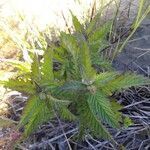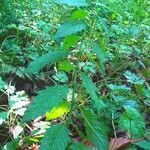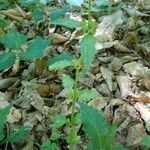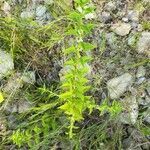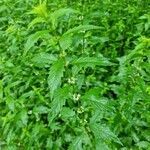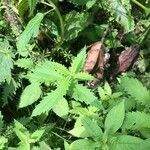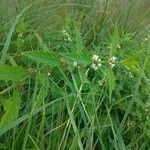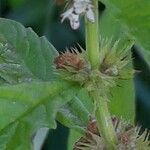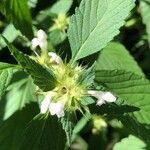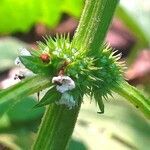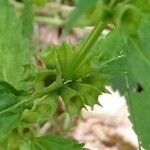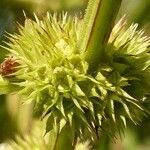Much like no. 4 [Lycopus americanus Muhl.], and hybridizing freely with it in the Great Lakes-St. Lawrence region, but often with slender stolons as well as rhizomes, and averaging more hairy, the hairs along the veins of the lower lf-surface mostly 0.5–1.5 mm; lvs averaging wider and more bluntly toothed, commonly strigose above; bracts avg longer (5.5 mm); cal a little longer (3–4.5 mm) its lobes with long, subulate tip; anthers longer (0.5–0.7 mm); nutlets a little larger (1.3–1.7 × 0.9–1.25 mm) and not so strongly tapering toward the base; 2n=22. European sp., casually intr. along the coast from Mass. to N.C., and now well established along the St. Lawrence R. and about lakes Erie and Ontario and w. Lake Huron. Hybridizes with no. 4 [Lycopus americanus Muhl.].
Perennial herb. Stem hairy, to c. 1 m tall. Lvs shortly petiolate or sessile. Lamina 3-8.5 × 1-3 cm, ovate-lanceolate to elliptic, deeply crenate-serrate, hairy at first, becoming glabrous or nearly so; basal area with narrow-oblong or linear-oblong lobes extending to midrib; apex ± acuminate. Upper lvs and bracts smaller, without basal lobes, hairy, especially on veins below. Calyx c. 3 mm long, hairy; teeth > tube, lanceolate-acuminate. Corolla 3.5-4 mm long, white with purple spots on lower lip and in throat. Nutlets 1.2-1.3 mm long, broad-obovoid, glandular and swollen on anterior face, with margin clearly delimited.
